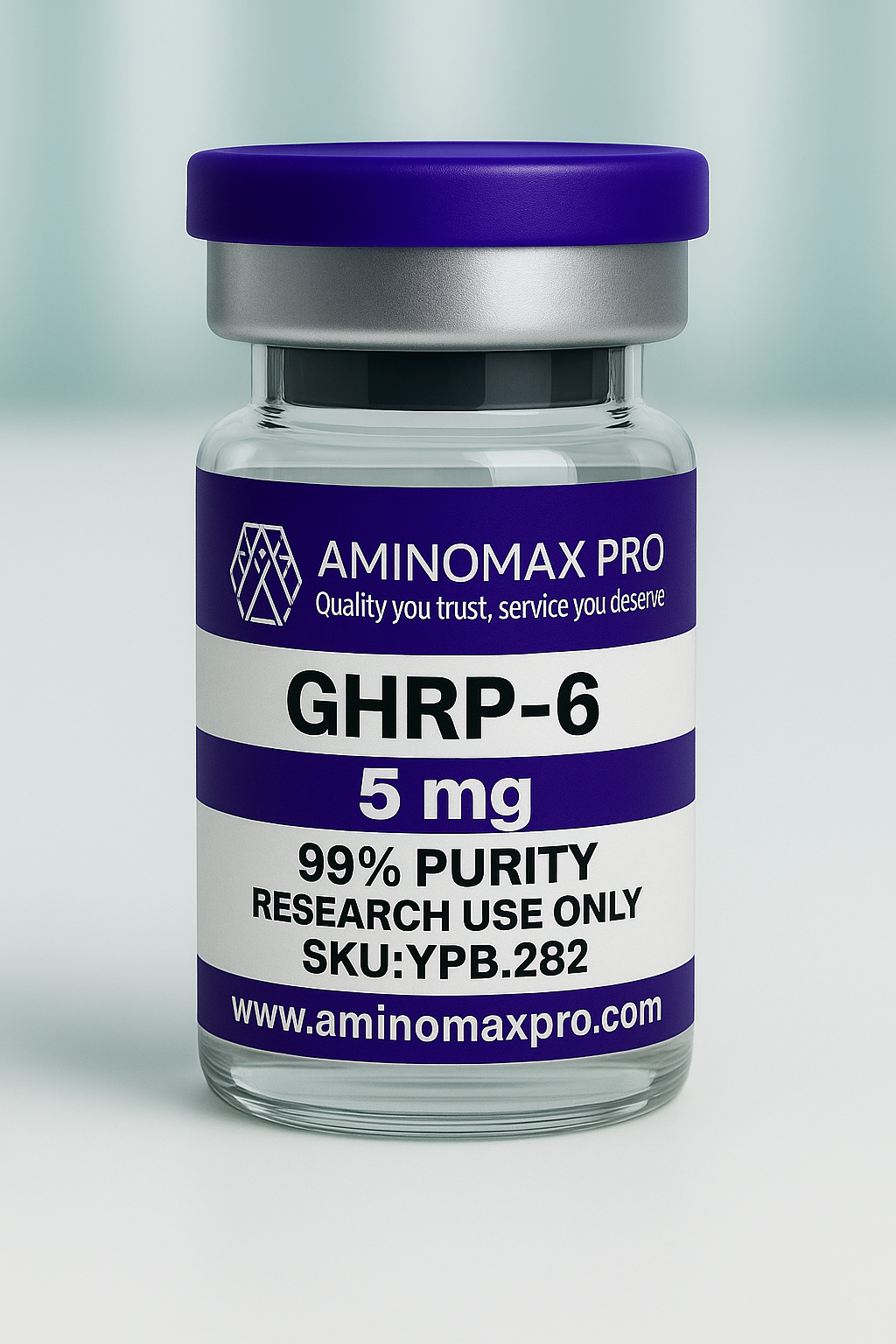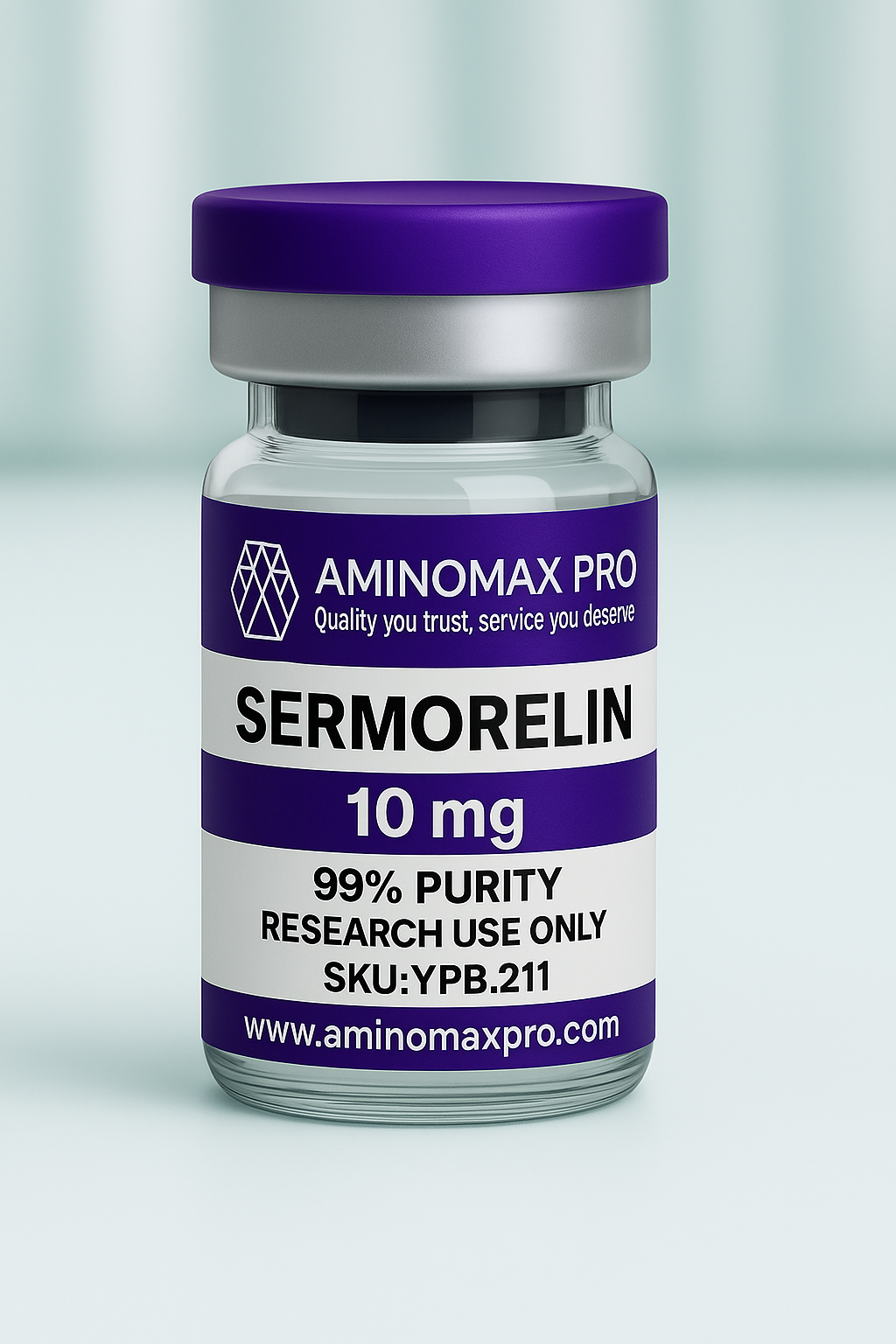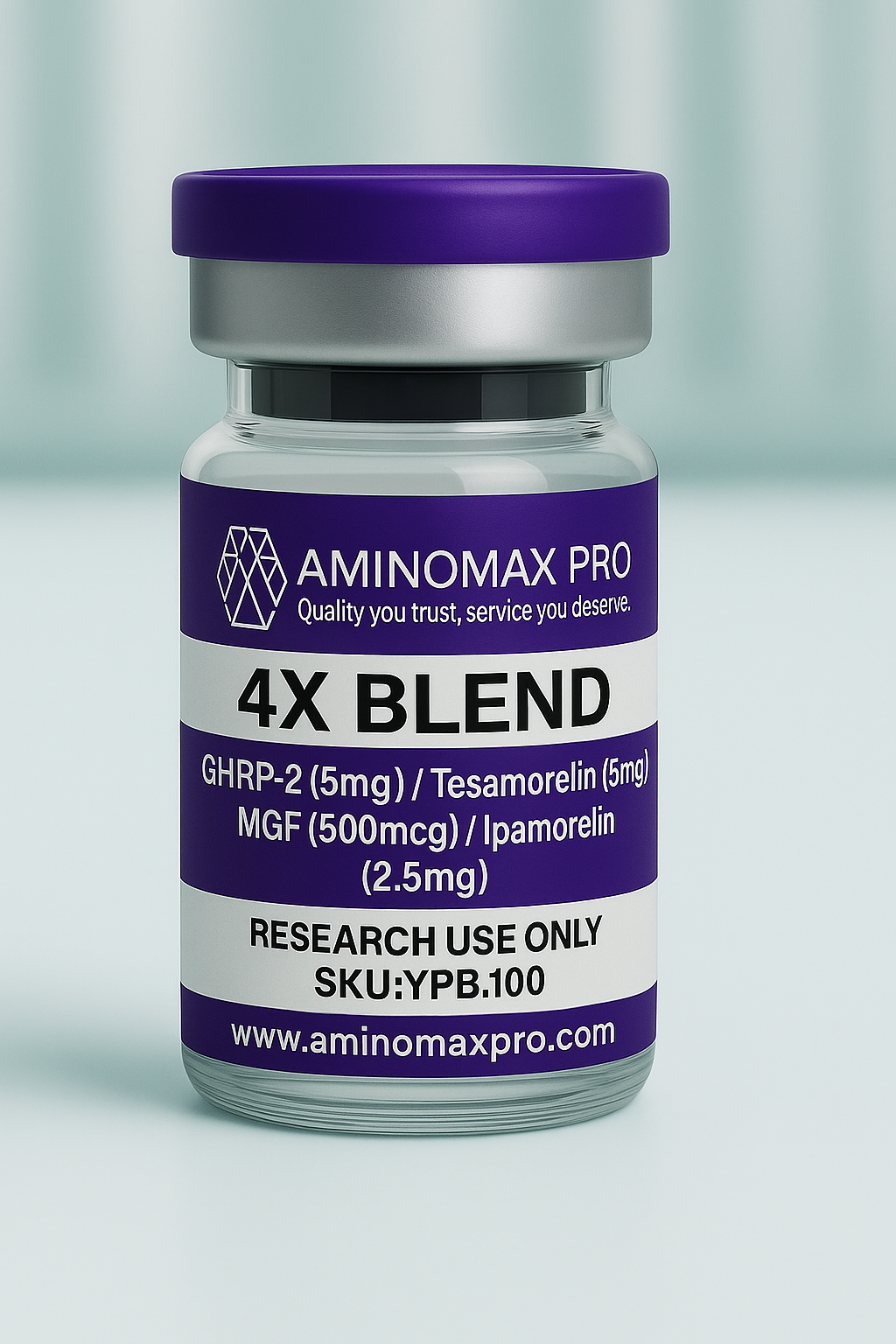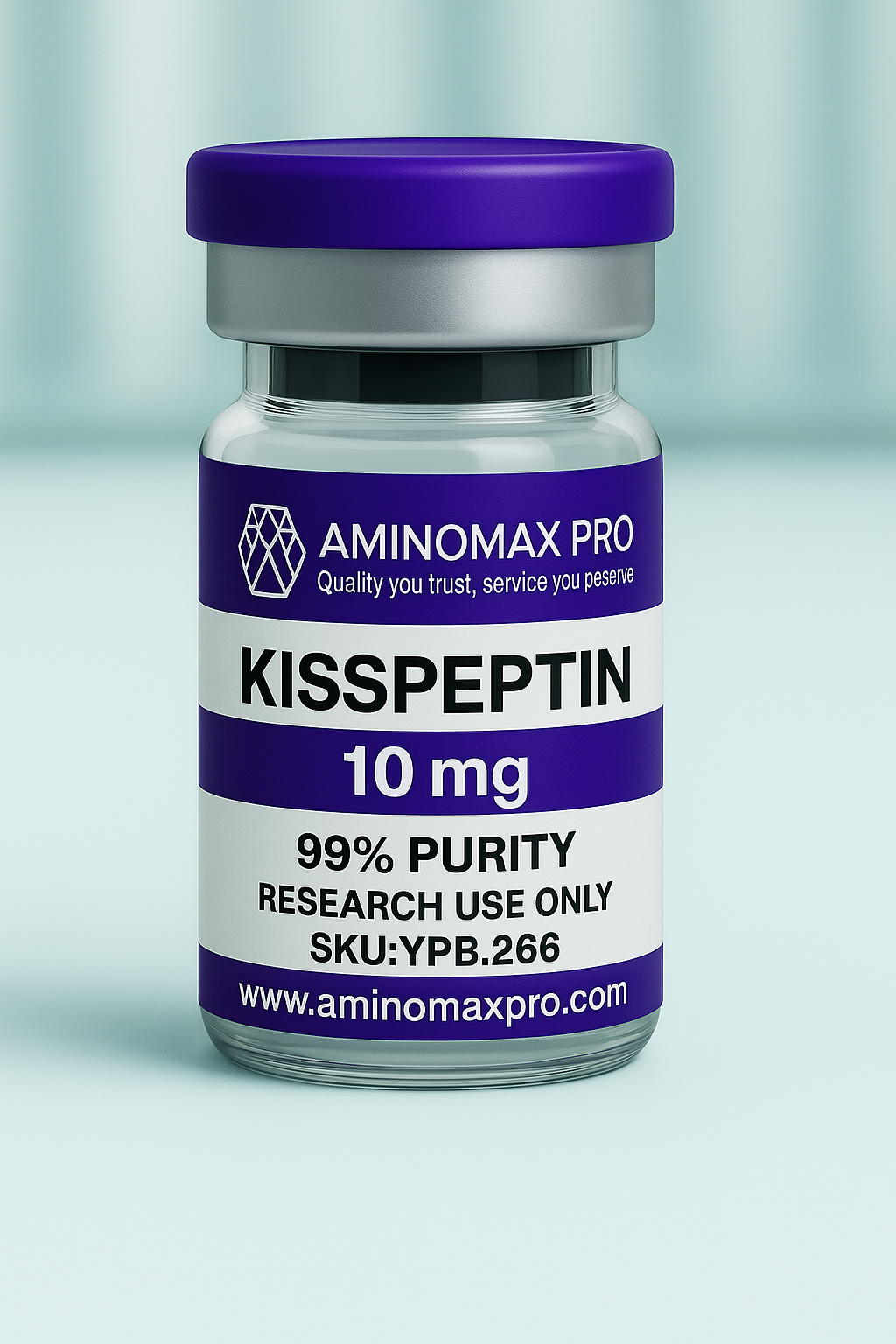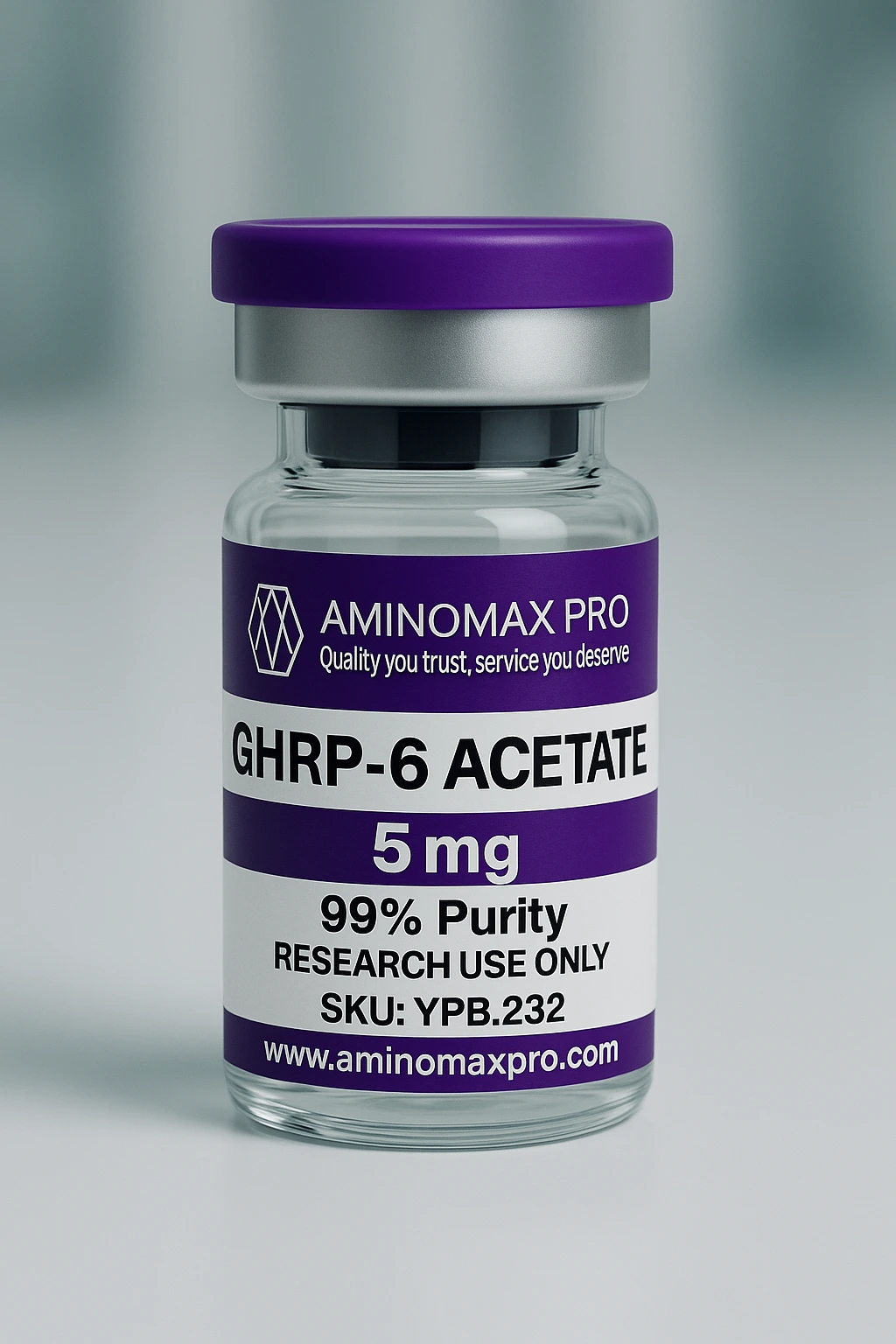Description
GHRP-6 Acetate – Advanced Biochemical Mechanism & Pathway Profile
(Growth Hormone Releasing Peptide-6 – Hexapeptide Ghrelin-Mimetic)
GHRP-6 is a synthetic hexapeptide classified as a growth hormone secretagogue. It acts as an agonist at the Growth Hormone Secretagogue Receptor type 1a (GHS-R1a), a G-protein–coupled receptor that also mediates effects of endogenous ghrelin. The acetate salt is used for formulation stability in research environments.
✅ Primary Receptor Target
-
GHS-R1a (GPCR, predominantly Gq and Ghs coupled)
-
Expressed in pituitary somatotrophs and hypothalamic neurons
✅ Core Intracellular Signaling Cascades
1. Gq → PLCβ Pathway
GHRP-6 binding to GHS-R1a activates Gq, initiating:
-
Phospholipase C-β (PLCβ) activation
-
PIP2 → IP3 + DAG hydrolysis
-
IP3-mediated Ca²⁺ release from the endoplasmic reticulum
-
DAG → PKC activation
This calcium-dependent mechanism stimulates vesicular GH release.
Key molecular outputs studied:
-
↑ intracellular Ca²⁺
-
PKC phosphorylation events
-
Activation of calcium-dependent transcription factors
2. Ghs/Gi → cAMP Modulation
GHS-R1a can couple to Ghs (ghrelin-specific G-proteins) or Gi:
-
Altered adenylate cyclase signaling
-
Changes in cAMP → PKA activity
-
cAMP-dependent phosphorylation of transcription factors such as CREB
3. Ghrelin-Like Neuropeptide Signaling
GHRP-6 stimulates hypothalamic neurons that control pituitary output.
Associated pathways of interest:
-
NPY/AgRP neuron activation
-
AMP-activated protein kinase (AMPK) signaling in metabolic nuclei
-
Calcium-dependent neurotransmitter release
✅ Gene-Level Targets Studied
Although GHRP-6 itself does not bind DNA or nuclear receptors, downstream endocrine signaling alters transcription of:
| Gene | Relevance |
|---|---|
| GH1 | Growth hormone synthesis in somatotrophs |
| GHRHR | Feedback on GHRH receptor expression |
| PIT1 (POU1F1) | Pituitary differentiation / GH transcription factor |
| SST (Somatostatin) | Negative-feedback modulation |
| GHSR | Receptor autoregulation |
✅ Additional Pathways Observed In-Vitro
MAPK/ERK Cascade
Activation of GHS-R1a can trigger:
-
Ras → Raf → MEK1/2 → ERK1/2
-
Gene transcription linked to somatotroph responsiveness and vesicle biogenesis
Calcium-Dependent Exocytosis
GH secretory granule release is driven by:
-
Ca²⁺ influx via voltage-gated channels
-
SNARE-complex membrane fusion
-
PKC-regulated synaptotagmin proteins
✅ Summary of Key Molecular Targets
| Category | Targets |
|---|---|
| Receptor | GHS-R1a (Gq/Ghs-coupled GPCR) |
| Enzymes | PLCβ, PKC, Adenylate Cyclase, Voltage-gated Ca²⁺ channels |
| Second Messengers | IP3, DAG, cAMP, Ca²⁺ |
| Transcription Factors | CREB, PIT1 |
| Genes Studied | GH1, GHSR, GHRHR, SST |
Research-Only Classification
GHRP-6 Acetate is provided exclusively for in-vitro laboratory research.
It is not approved for human or animal use, ingestion, injection, or diagnostic or therapeutic application.


